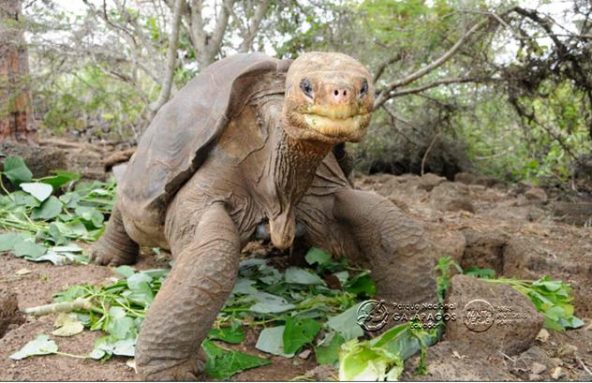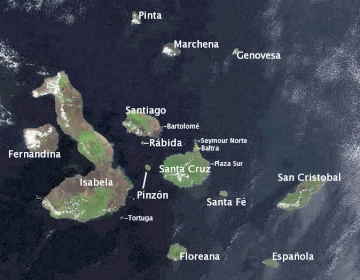Bye-bye, George

For roughly a century, George tardily explored his territory on a Galápagos island off of Ecuador's Mae West coast. The 200-pound guy ambled tardily. But that was to be expected. George was a giant tortoise. Regrettably, sometime in the early morning time hours of Sunday, June 24, Ecuador's beloved reptilian took his last step.
IT was a sad time for the researchers and park rangers. For decades they had watched over the lilliputian bozo (tortoises from other parts of the Galápagos Islands could exist three times his size). But "Lonely George VI," as the tortoise had been known, volition be affectionately remembered as the last ambassador of his Pinta Island home.
Monster overland tortoises are rare. Among them, Lonely George V became quite an global celebrity. The main reason: Helium was the sole surviving member of his subspecies (which is a genetically crisp group inside a species).
George was first disclosed on Pinta Island in 1972. Back and so, biologists had already given up on his subspecies (Chelonoidis nigra abingdoni). They had ruled it extinct. Merely George's survival held out desire that helium might breed with females of a similar subspecies. IT would keep genes of his subspecies alive.

Based connected satellite images, this map shows the major Galápagos Islands. This chain forms a province of Ecuador and lies 1,000 kilometers west of South U.S.'s mainland. Credit: Wikipedia/NASA
Wildlife biologists began by moving George. It was to another Galápagos island, Santa Cruz. Here, they had set up a captive-breeding center. Biologists then brought in two females from a slightly concerned subspecies (Chelonoidis nigra becki). They had been captured on nearby Isabela Island. Over a 15-year period, the 2 female person members of this Volcan Wolf Galápagos tortoise laid a total of 16 eggs. None proved fertile. Biologists at the enquiry adroitness concluded that maybe the two subspecies were non closely related enough for them to cover successfully.
Genetic analyses turned up a more closely direct subspecies. It was a hulk tortoise happening Ecuador's Española Island. 2 years ago, females from there, besides in the Galápagos, were assumed to the breeding center. The scientists set out them in a pen with George. But smooth no babies.
In the years before his death on Billy Sunday, George Ate normally and appeared fine. Then on Monday, veterinarians performed a necropsy — the animal version of an necropsy. The findings, government officials reported Tuesday, indicated George had died from natural causes.
Over the last four decades, George evolved to become a living symbol throughout the public of the risk of species extinctions. Efforts to make unnecessary his inheritable line — and that of other monster tortoises — spilled complete into efforts to save other imperiled species as well, notes Edwin Naula. He is the director of Galápagos National Park. As such, Naula vowed this week that George's carcass will constitute preserved. Advanced, IT will go on showing as region of a new tortoise museum in the parking lot. He vowed the facility would cost named in George VI's honor.
Power words:
Galápagos Islands in the Pacific Ocean that belong to Ecuador and are located some 1,000 kilometers (620 miles) west of the South American mainland. Darwin's visit to the islands in 1835 and his observation of unusual animals on them elysian his theory of evolution.
necropsy The testing of the clay of an animal, usually to determine campaign of death. When conducted on people, this examination is called an post-mortem.
tortoise Any of single turtles that know ashore.
subspecies A subdivision of a species, usually based on geographic separations. O'er time, this legal separation may consume allowed some of the genes in a universe of a species to vary, creating differences in those organisms' appearance or adaptation to the topical anaestheti environment.


0 Response to "Bye-bye, George"
Postar um comentário